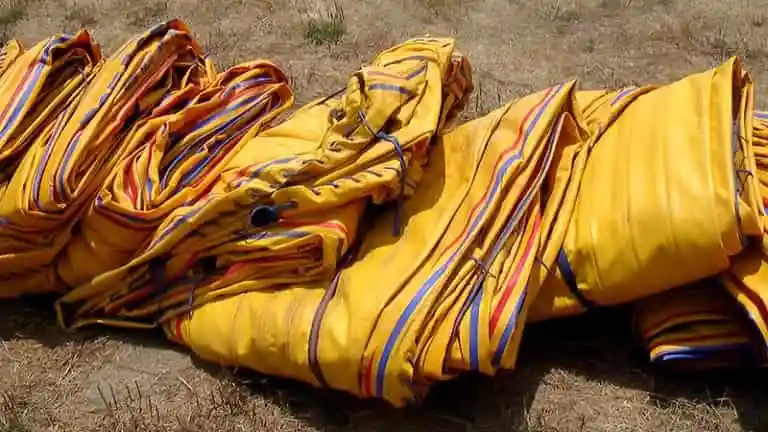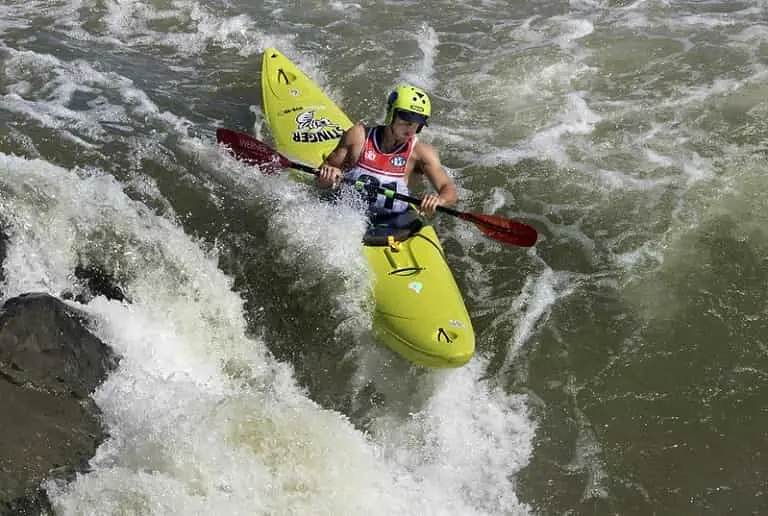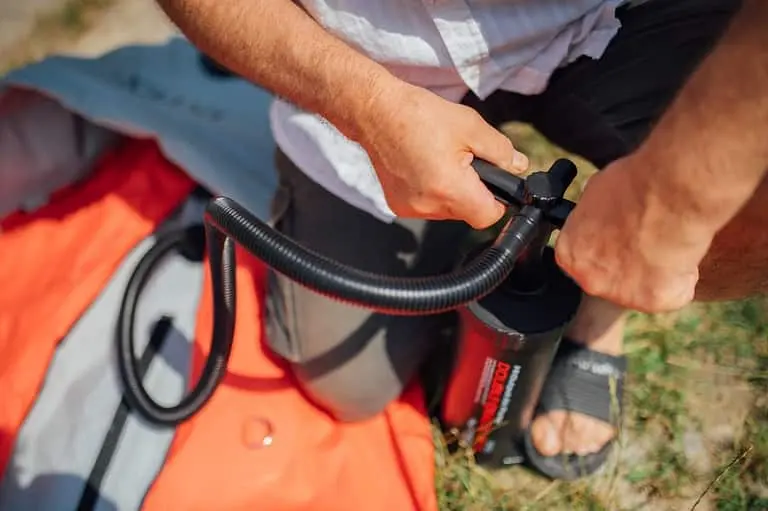Kayaking is one of the most popular ways to enjoy nature. If you’re like me, you probably have both an inflatable kayak and a hard-shell kayak in your garage or storage space.
You might even have multiple boats or you are planning to get one for you for all different kinds of activities, such as whitewater or fishing . But do you really know the differences between these two types of kayaks? Can you tell whether one is better than the other?
In this article, we’ll try our best to shed some light on this question by comparing inflatable and hard-shell kayaks so that you can decide which one works best for your needs!
Table of Contents
Inflatable kayaks are easier to store and transport

The biggest benefit of an inflatable kayak is that it’s lightweight, compact, and easy to store. This makes it great for anyone who needs to travel with their watercraft.
An inflatable will fit in the trunk of your car or in a carry-on bag on an airplane. It can even be rolled up and carried like a backpack!
Hard-shell kayaks work better in whitewater or rocky areas

If you’re going to be paddling in the ocean, whitewater or rocky areas, hard-shell kayaks are a better choice. Most designs are made of plastic and will not take on water, making them more durable and less likely to fall apart when jostled by waves and rocks.
Hard-shells also tend to have larger cockpits than inflatable options, so they’re easier for tall people or those wearing life preservers (another reason why I prefer hard kayaks).
Hard boats usually have more storage space than inflatables—some even come with outriggers for storing gear outside the boat itself.
The downside? If you want something that’s easily portable or can fit in small storage spaces (like an apartment), then an inflatable is probably your best bet.
They’re also lighter than their plastic counterparts—an important feature if you plan on carrying it long distances before setting it up at your destination point.
Also read…
Whitewater Kayaking Lessons: What to learn?
You can’t damage a hard kayak as easily
You might get tired of getting your inflatable kayak damaged, but that’s the risk you take with a soft shell. They can be punctured or ripped and repaired at home, but I wouldn’t advise it unless you are well versed in sewing technique.
Hard shells are made from harder materials such as fiberglass or polyethylene, making them much less likely to break or get damaged. They also won’t fade due to sun exposure like some inflatable kayaks can do over time.
Inflatable kayaks are cheaper than hard-shell kayaks
In general, an inflatable is going to be a lot cheaper than a hard shell. There are two main reasons for this:
Firstly, the materials used in inflatables tend to be much less expensive (and therefore more lightweight) than those used in hard shells.
Secondly, due to their modular design and simple construction process, the labor cost of making an inflatable is lower compared to making a comparable hard shell.
In short, you can expect your inflatable to cost around 40% less than its hard shell counterpart when both are brand new. So, do some research on best inflatable kayaks that are available in the market under a low cost while giving best in return.
However, even though it might seem like an easy decision at first glance—especially if money is tight—there’s another factor that makes deciding between buying an inflatable vs buying a hard-shell difficult: resale value!
Hard-shell kayaks don’t need to be inflated before use, which is a plus for some people

Hard-shell kayaks are generally more expensive and heavier than inflatables, but they’re also more durable and less susceptible to puncture. If you plan on doing a lot of whitewater, this is probably your best option.
The main downside of hard kayaks is that they can be quite difficult to transport—depending on the size and model you buy, it may take two people or more just to get it onto your roof rack or into your trunk.
Harder plastic varieties are also heavier than inflatable ones (the Yolos Wetsuits Kayak weighs 14 pounds while an Intex Explorer K2 Inflatable Fishing Kayak only weighs 8).
One final note: when buying a hard-shell kayak, be sure that the material used in its construction is UV resistant! This will ensure that—over time—your investment lasts longer than expected by protecting against sun damage and rusting metals exposed in open waters.
Read more…
9 Best Tandem Inflatable Kayaks for 2-3 persons!
3 Tips to win Inflatable vs hard kayak debate
1. Choose a renowned brand
You’ll have more options if you choose a name brand over a generic product. Name brands offer better warranties and are more likely to be manufactured in the United States. They’re also made from higher quality materials, which means they’re less likely to break or get damaged.
Lastly, name brands tend to come with better reputations, which means they often have better customer service departments that can help you out should anything go wrong with your purchase (or if you just want some advice).
2. Think about the comfort first
You’ll be spending a lot of time with your boat, so it’s important that you make sure it’s comfortable. The best way to do this is by investing in a good seat.
A good seat should be easy to adjust and stay where you put it. It should also have padding that keeps your butt dry and warm, which will make all the difference when you’re out on the water for hours at a time.
If all else fails, remember: kayaking is supposed to be fun! Make sure that whatever type of boat you choose fits both your needs and your preferences before committing fully needlessly
3. Taking care of the boat
Taking care of your kayak is important no matter what type you get. They’re not disposable, so don’t treat them like they are.
Cleaning: Regularly clean your kayak with a mild soap and water solution or a proper cleaner. You can also use an anti-fungal spray to prevent mold buildup on the inside of your boat as well as any exterior hard plastic parts that touch the water, such as the seat backrests and supports for paddles and rigging lines (typically found at either end of most inflatable boats).
Inflation: Make sure that your inflatable kayak is properly inflated before use! It’s important to keep tabs on this because if there’s too much air in it, the boat won’t perform well in waves or rapids—and worse yet.
If you don’t notice until later on after taking out into open water where it might be too late for anything else than going home early due to lack of control over how fast one might get carried away by unexpected currents!
So make sure all parts are properly inflated before heading out onto those choppy waters—it’ll save time while eliminating unnecessary panic attacks later down there near shoreline where everything seems calmer but really isn’t.
Conclusion
Inflatable kayaks are better for casual paddlers who want something that’s easy to store and transport. If you want a boat that can go anywhere, get one with a hard shell. In fact, kayak means hard kayak for real fun. Though some inflatable kayaks come up with great performance and stability with ultimate comfort.
Also read…
Sit on top vs sit in kayak: which type is right for you?



Pingback: 7 problems with Inflatable Kayaks and How to Avoid Them - Safekayaking